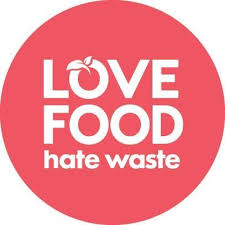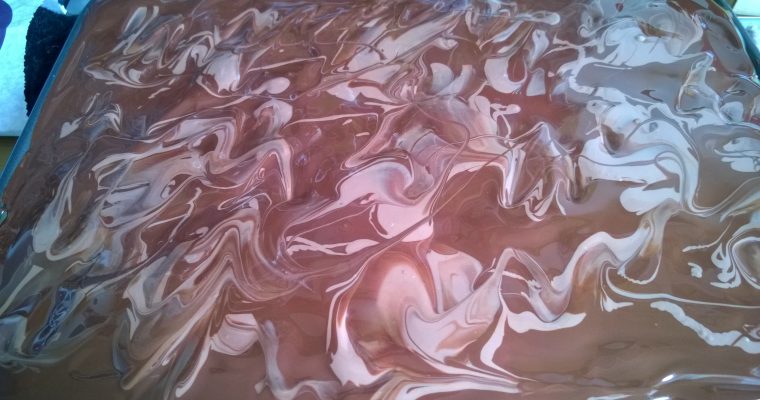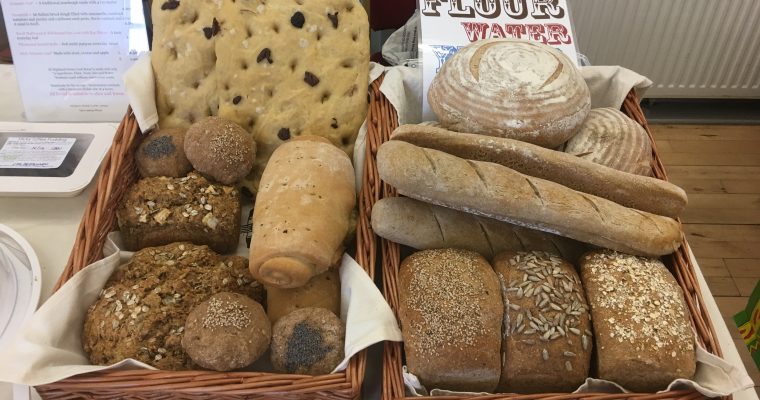I promised to write this blog 10 days ago, and am hoping that the ‘better late than never’ adage still applies.
Food waste is a huge issue across the globe. Farmers, supermarkets and families all contribute to the massive amount of food waste in the UK. There isn’t one solution that’s going to solve all that waste in one hit, but there are things we can do on a personal level to avoid our own waste food mountains. When the average household wastes £460 of food a year the value soon ramps up. It’s the equivalent of 1 in 5 shopping bags being ditched. £7 million per annum across the UK. So, imagine if you’re not wasting food how much you can save.
It’s important to change our mindset and remember that food is not rubbish, it’s a valuable resource. The less we can throw away, the better. If you compost food, at least it’s getting another life, rather than going into landfill, but it’s surely better to make use of the food we have.
I’ve already posted an infographic on 6 steps you can take to reduce the amount of food that you throw away. Even if you follow all that, the chances are, from time to time, you will still have leftover items. The most commonly wasted foods are
- Bread
- Bagged salad
- Fresh vegetables
- Cooked leftovers
- Fresh fruit
- Milk
- Eggs
- Cheese
- Meat
- Fish
I’d be here all year if I gave you recipes for every item, but here are some tips for avoiding wasting some of these products, which I hope will be helpful.
Bread is an easy one to avoid wasting. My top tip is to buy your bread from a local artisan baker when you can – I would say that, of course. You’ll pay more for it and there won’t be lots of additives and preservatives in it, which is a good thing as it means it’s more likely to go stale and dry out than go blue and mouldy. A decent loaf is also more likely to be eaten rather than being left to fester in the bread bin. If you don’t eat a lot of bread consider cutting a loaf in half and slicing it up for the freezer, that way you can take a slice or two as and when you need it. If you do have older bread leftover you can always toast it or make it into breadcrumbs or croutons, both of which can be frozen. Other options are to make a dessert, such as bread and butter pudding, or Queen of Puddings or a savoury pudding similar to bread and butter pudding but with a savoury custard and perhaps some cheese and a veg – lots of things would work, but mushrooms are a particular favourite.
If you have to buy bagged salad try and use it soon after purchase. It’s been washed and it’s keeping qualities will not be great. A much better option is to buy a whole lettuce as they keep much better. If you do have some salad left that’s looking a bit limp you can add it to a smoothie, a soup, or make a pesto with it. Add some parsley or basil, oil, nuts, seasoning and blitz. No one will know it’s your leftover leaves!
Fresh vegetables, if stored well, will keep for quite a few days and root veg, onions, cabbage and potatoes for considerably longer. Ignore any best before dates and use your eyes and nose to determine whether something can be used or needs to be composted. Old mushrooms might smell a bit fishy, but unless they’re black and slimy, they’re perfectly OK to cook with. Have you got a rubbery carrot, a leftover bit of pepper? Make a filling frittata. You can chop all sorts of leftovers veg and put them in. A soup will also use a multitude of leftover veg. The judicious use of herbs and spices will perk up the less than at their best leftover veg. A rice jumble will give you similar options. Cook rice with onions and any number of leftover veg, herbs and spices, maybe a few nuts, and you have a nutritious and interesting meal. If you don’t have enough leftover to make something how about blitzing them up with some pulses such as black beans or chickpeas to make some tasty vegetable patties? Add some seasoning and some chilli, or other spices, and you’ll have some tasty morsels. The possibilities are endless and in ‘the cookbook’ I have a few suggestions for using up leftover veg.
Cooked leftovers need to be cooled quickly and then refrigerated or frozen. I deliberately make leftovers so that I can have homemade ready meals in the freezer when required. Depending on what the meal is, you could also re-purpose it. For example, a stew can make a good pie or pasty filling. You can make arancini with leftover rice, gnocchi or tattie scones with leftover potato. If inspiration totally deserts you, simply reheat it for lunch or tea another day! Make sure you label any leftovers you keep in the fridge or freezer with a date and what they are so you remember to use them up (3/4 days for leftover veg in the fridge; I’d be more careful with meat) it’s surprising how similar everything looks once it’s been frozen!
Fresh fruit leftovers can be pureed into smoothies, stewed into compotes and added to cakes, made into crumbles or even ice lollies. Some things work better in certain dishes, so check out a few recipes in line for the ingredients you have.
Milk can also be frozen. If you’re buying large quantities you could split them so a litre is in the fridge and a litre in the freezer. If you do find yourself with leftover milk that’s past its best there are a number of things you can do with it.
You can make a soft cheese, like the Indian paneer which is as simple as putting it on to heat, adding some lemon juice/yoghurt, and straining the resultant liquid from the curds. Use the liquid you strain off to add to scones or bread. Use that leftover fruit and leftover milk to make a leftovers smoothie. As you will gather, I’m a strong proponent of the smoothie! You can make pancakes, a cheese sauce or a milk pudding. You can even make yoghurt.
Eggs keep for quite a while. Do the egg test, so long as it doesn’t float, you can still use it. Cakes are good for using up eggs, but eggs can be boiled and used in other dishes like fish pie or veg and egg pie. A mayonnaise strong with garlic or a sauce or soup that uses eggs would also work well. Make a thin omelette and cut it into strips to use as a pasta substitute – great for a gluten free meal. An eggy bread, a.k.a. French toast or an egg in your use-it-up rice and veg jumble would also work well.
Leftover cheese. As a cheeseaholic, I can’t really imagine having leftover cheese. We always have cheese in the fridge. It keeps for ages. I re-package it once it’s open, so never know what the date original date on it was. I have a hard goats cheese from my holiday in Lanzarote last year in October, which I’m still using. There’s nothing wrong with it! Soft, young, fresh cheeses will keep less well than hard aged cheese and you can use these up in cheesecakes, cakes, bread and sauces. I’ve also been known to use them up in quiches and flans and various dips. Hard cheeses will also work in most of the above, except the cheesecakes! Most things are improved, in my opinion, with a grating of cheese; think cheese and breadcrumbs on top of a macaroni cheese, or a baked vegetable dish. There’s really no reason to be throwing away cheese!
Meat is one thing that should be used by is best before date, although I would still use the sight and smell test as a lot of meat will smell or oxidise (change colour in the air) when it is off. As long as you heat meat to the correct temperature (82°C in Scotland) it will kill any bacteria. I don’t eat meat and don’t buy much meat (other family members do eat it), but I would be tempted to buy very small quantities of high welfare local meat and portion and freeze it if I didn’t have an immediate use for it. Buying less meat of a higher quality is good for you, the animals, local producers and the planet, so consider if you might be able to do this. If you do have leftover meat you need to use up, you can’t beat pies, curries and chillies. Once cooked it can be frozen, even if the meat was frozen before.
Fish is another product which needs to be used fresh and within a short timescale. Again, if you’re not going to use fish immediately, package well and make use of your freezer. If you do have leftovers, a fish pie is always a good use for little bits of fish, giving you a better variety. Fishcakes are an obvious use for leftovers and you can use that leftover potato too! A fish soup can be a tasty thing and is enhanced by a decent fish stock – I use langoustine shells to make mine. If you don’t fancy any of the above, how about a fish hash or jumble? This is a ubiquitous leftover dish of ingredients from a leftover roast dinner thrown in a pan and fried. Fish would go well with cabbage and potatoes fried with a generous amount of olive oil and some seasoning. A great brunch or lunch dish!
Although I’ve not been able to give recipes for each leftover ingredient, due to time constraints, I hope that this has given you some ideas and inspiration for using up your leftover food. Get creative. Leftovers have lots of exciting possibilities and using them up will make you a better and more sustainable cook.
You can find more ideas for using up leftovers in my cookbook too.
https://highlandhomecook.square.site/product/highland-home-cook-the-cook-book/24?cs=true
If you want to find out more or take action, check out the link below:


